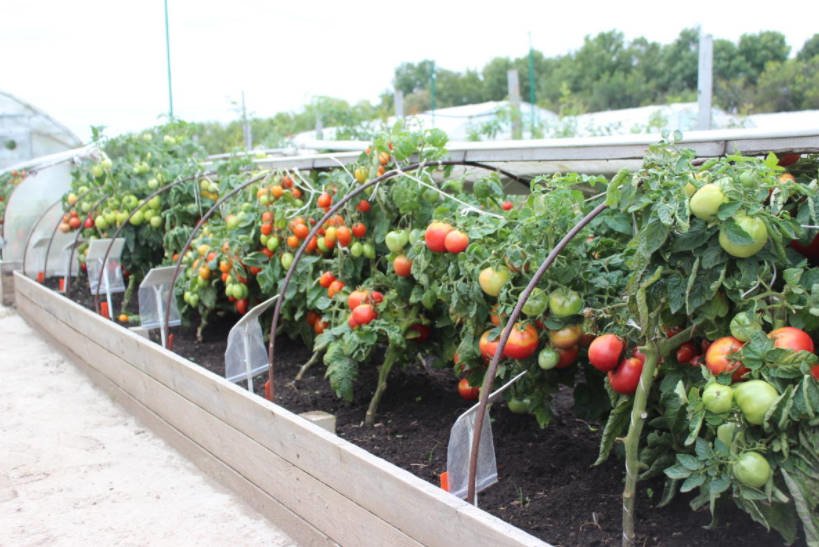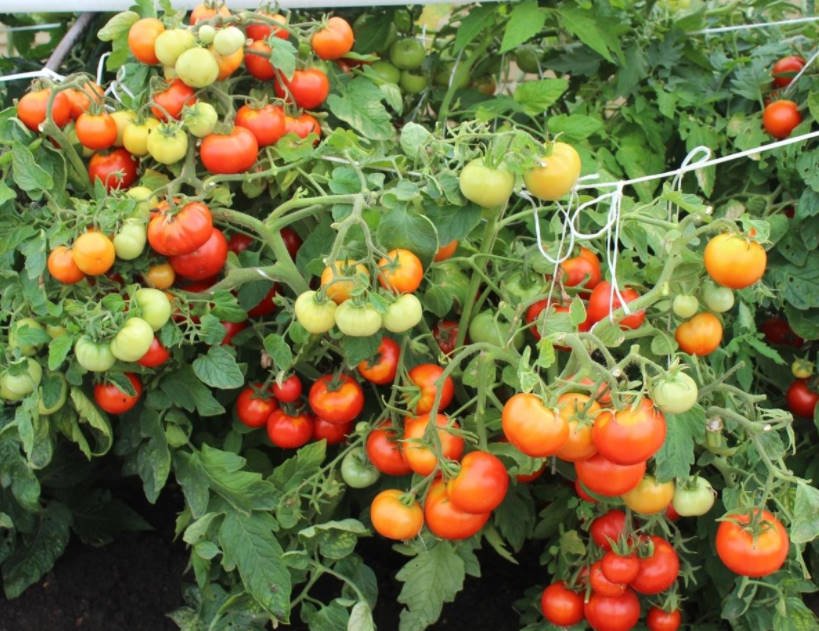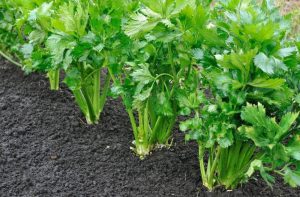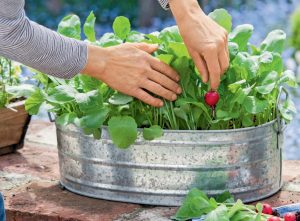
It is important not only to bring out the variety, but also to see how it will behave in real conditions that gardeners from different regions have. In addition to the greenhouse complex for testing varieties and hybrids, we have placed on the test site the usual < strong>beds-boxes< / strong>, which are widely used in many areas, because not every summer resident has the opportunity to build a high greenhouse.
We liked this method very much: in the course of tests, it annually confirmed its high efficiency. We grow almost all crops in boxes, but in this material we would like to pay special attention to tomato — one of the favorite vegetable crops in our country.
Growing tomatoes in box beds
This method (like any other) has its own characteristics. We offer a brief overview of our experience in its application.
Sowing, planting seedlings
Sowing tomato seeds for seedlings for subsequent planting in beds-boxes should be done in the traditional time for this crop — in the second decade of March. And you can plant plants in boxes in the second half of May.

Tomatoes on beds-boxes: the abundance of fruit sugar
Seedlings are planted in beds in 2 rows, leaving 30-60 cm (1-2 feet) between the plants. The distance depends not only on the compactness of the variety (hybrid), but also on your capabilities: if you can not often appear on the site in time to plant plants, you need to leave more space between them.
The distance between the rows is 80 cm (2.6 feet): this row spacing is necessary for loosening the soil and spreading the plants. The border between the beds will facilitate watering. Hoeing should be done once, so as not to injure the root system.
Location of ridges
If the plot is located on a slope, then the direction of the ridges should be perpendicular to the direction of the slope, that is, so that they are located in the form of terraces. The surface of each ridge should be strictly horizontal.
Preparation of ridges
The easiest way is to use wooden boards. They are easy to make, they are easier to install shelters, they look neat, well-fenced beds from the aisles. The ideal size of the comb, which has developed over several years of testing , is 120×600 cm (3.9×19.6 feet). This range is easy to maintain and versatile for different cultures. In addition, weeds simply do not survive on narrow ridges and between rows, to remove them, just a little work with a regular hoe or cultivator is enough.
The rows
They are never dug. This is one of the main pleasant features of the method, which frees up time and saves energy. It is easy to walk along the wide aisles with a wheelbarrow and buckets, to drag a watering hose. Undeveloped territory provides additional space for the development of the root system.
Soil
Before installation-boxes-beds dig up and level its surface. The peculiarities of tillage require a separate explanation. Simply put: compost, peat and river sand are added to the fertile soil of the garden, and phosphorus and potash fertilizers are added. If necessary, add deoxidizing materials, such as dolomite flour.
Installing arcs
Flexible hazel branches can be used as Arcs. We use iron arcs made of thick wire-wire rods and rebars. These arcs are very convenient to reinforce with non-woven covering material (for example, lutrasil). Moreover, it will be needed at all stages: in the spring, when you need to let the soil warm up and retain moisture; in the summer, when you need to protect the plants from adverse weather conditions. In the middle zone in the second half of summer, a fabric material is required to shelter plants (to avoid the risk of late blight).
The non-woven fabric is fixed on two wooden slats fixed along the air ducts at the tops of the arcs. Thus, lutrasil can be easily raised and lowered depending on the weather conditions. Additional strips in the upper part of the arches along the air duct, it is convenient to tie up other plants.
Care of ridges-boxes
In late autumn, it is necessary to tilt the soil from the garden walls to the center, so that the boxes do not deform. For the next season, you can leave the same boxes, treating them with a drug that prevents the material from rotting. They will look like new ones. At the request of the customer, you can paint or even paint them, if the design of your site requires it.
What varieties are best used for growing in box beds
Tomatoes should be early-ripening, resistant to temperature changes and only determinant.. They are easy to tie to arcs, so the plants do not overlap each other with sunlight, the space between them is well ventilated.
The tomato cultivar ‘Flash’
Ultra-fast: yields 95 days after germination. Low (due to shortened internodes). The bush is literally covered with delicious fruits weighing 80-120 g (2.1-4.2 ounce). The plant is quite compact, which allows you to thicken the planting and increase the yield per square meter. On such a bed there will be no place not only for diseases, but also for weeds.

Properly selected varieties will give a plentiful harvest
Tomato variety ‘summer Resident’
Precocious. It has a strong, powerful stem that securely holds the weight of the fruit. This variety, due to its high resistance to various stresses, adverse weather conditions and high fruit setability in cool weather, is very popular.
Shrub varieties produce a more powerful plant, unlike stamps.
In the variety ‘Texas dawn’, the fruits are pink (they are considered especially tasty and sweet), quite large. And this is when the height of the plant is only 60-65 cm (2-2.1 feet)! They are perfect for the early summer, most flavorful salads. And the” Trump “of the” Golden ” variety is a lemon-yellow color of the skin and pulp rich in beta-carotene.




Leave a Reply